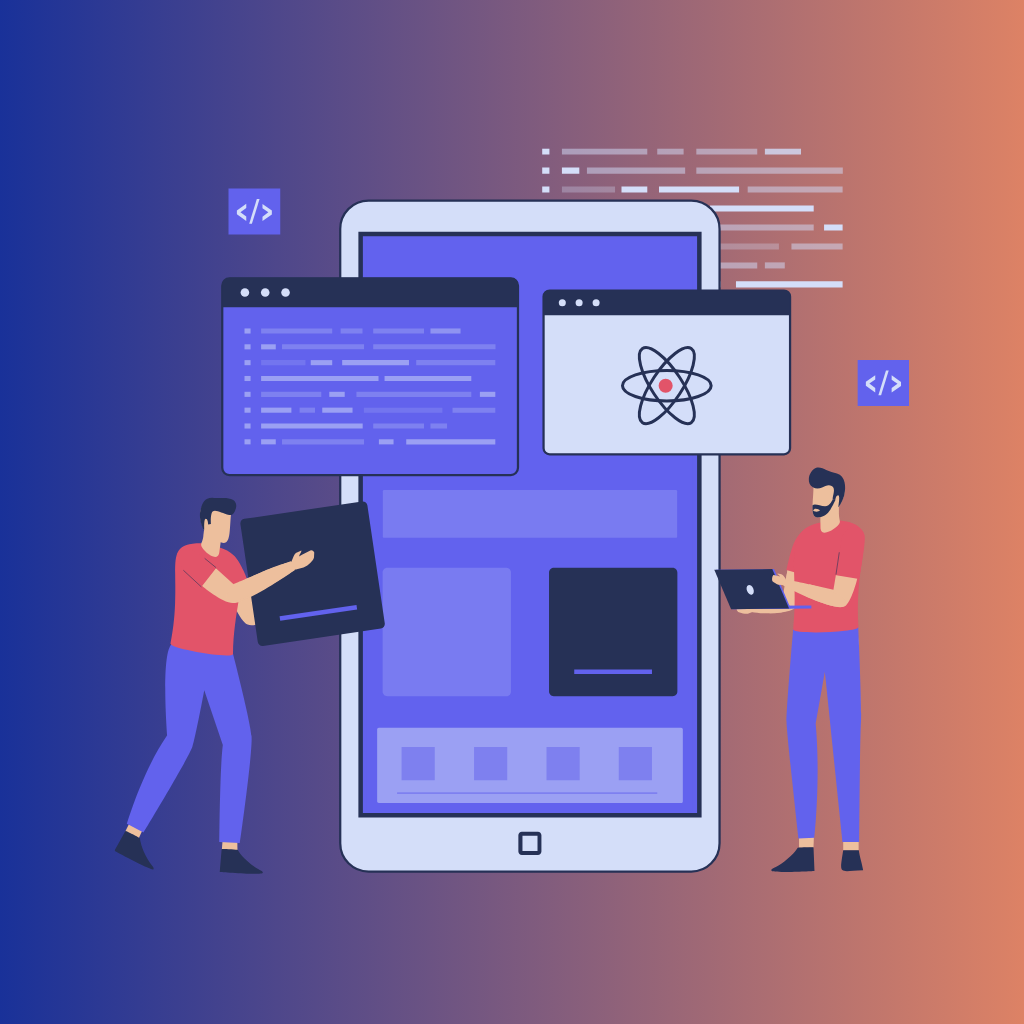In today's digital landscape, the mobile experience isn't just a part of the online world; it's often the main stage. With over half of the global web traffic coming from mobile devices, ensuring your app or website performs flawlessly on smartphones and tablets isn't a luxury—it's a necessity. This shift towards mobile-first thinking underscores the importance of design strategies that cater to varied screen sizes and user contexts.
Enter two pivotal design concepts: adaptive and responsive design. Both approaches aim to make web and app experiences more fluid and enjoyable across different devices, but they take distinct paths to achieve this goal. Responsive design relies on flexibility, adjusting the layout dynamically to fit the screen it's viewed on, whether it's a compact smartphone, a tablet, or a widescreen desktop monitor. Adaptive design, on the other hand, detects the device type and delivers a predetermined layout optimized for that specific device.
This comparison raises a vital question for app developers and website owners alike: Which design approach is the best fit for your project? By exploring the nuances of adaptive vs. responsive design, this article aims to shed light on their strengths and limitations. Our goal is to guide you through making an informed decision, ensuring your digital presence is not just mobile-friendly, but tailored to provide the best possible user experience across all devices.
I. Understanding Responsive Design
Responsive design has become a cornerstone in crafting websites and applications that provide a seamless user experience across a multitude of devices. At its core, responsive design is a method that enables web content to adjust dynamically to the screen size and orientation of the user's device. This adaptability ensures that whether a visitor is using a smartphone, tablet, or desktop, the site's layout, images, and text scale and rearrange themselves to remain readable and accessible.
A. How Responsive Design Works
The magic of responsive design lies in three primary technical components: fluid grids, flexible images, and CSS media queries. Fluid grids ensure that layout components resize in relation to one another instead of using fixed sizes. This flexibility means elements on the page grow or shrink smoothly as the screen size changes. Flexible images are similarly scalable, adjusting within their container elements to prevent distortion or loss of quality. CSS media queries act as the conductor for these components, allowing the website to apply different styles based on the device's characteristics, such as its width, height, or orientation.
Pros of Responsive Design
- Fluidity and Flexibility: The hallmark of responsive design is its ability to fluidly adapt to any screen size. This flexibility enhances the user experience, making browsing and interacting with content seamless no matter the device.
- Cost-Effectiveness: Developing a single responsive website is generally more cost-effective than creating multiple versions of a site for different devices. It simplifies the development process and reduces long-term maintenance costs, as updates only need to be applied once.
- Improved SEO Implications: Search engines like Google favor mobile-friendly websites. A responsive design is inherently mobile-friendly, which can help improve a site's search engine ranking, making it more visible to potential visitors.
Cons of Responsive Design
- Potentially Longer Loading Times: For complex sites with high-resolution images and extensive scripting, responsive design can lead to longer loading times on mobile devices. This issue arises because the same assets are loaded regardless of the device, even if they are visually scaled down.
- One-Size-Fits-All Approach: While responsive design aims to accommodate all screen sizes, it sometimes falls short in addressing specific user needs or preferences based on the device. This approach can lead to compromises in the user interface or experience, particularly for sites that require intricate interactions or functionalities.
II. Exploring Adaptive Design
While responsive design focuses on flexibility, adaptive design takes a more tailored approach. Adaptive design involves creating multiple versions of a webpage to fit different screen sizes or device types. When a user visits the site, the server detects the device being used and delivers the version of the site optimized for that device. This method allows for more control over the user experience by providing layouts that are specifically designed for the capabilities and limitations of each device type.
A. How Adaptive Design Operates
Adaptive design hinges on the server's ability to detect the user’s device type upon request. Once the device type is identified, the server serves a pre-set layout that is specifically optimized for that device. This could mean showing a more complex layout to desktop users, while serving a simpler, more streamlined version to mobile users. This approach requires the development of multiple versions of a site, each designed for different screen sizes or device capabilities, ranging from small smartphones to large desktop monitors.
Pros of Adaptive Design
- Tailored User Experiences: One of the most significant advantages of adaptive design is the ability to create highly tailored experiences for users on different devices. This customization can lead to more effective navigation, better usability, and an overall improved user experience.
- Potentially Faster Loading Times: Because each version of the site is optimized for a specific device, adaptive design can lead to faster loading times. For instance, smaller images and fewer complex scripts can be used for the mobile version, speeding up the site’s performance on smartphones.
- Greater Control Over Design and Functionality: Adaptive design provides developers and designers with more control over how content is displayed on various devices. This can be particularly beneficial for sites that require different functionalities or navigation structures depending on the device being used.
Cons of Adaptive Design
- Higher Development and Maintenance Costs: Developing and maintaining multiple versions of a website can be costly and time-consuming. Each version needs to be designed, developed, tested, and updated separately, which can significantly increase the workload and expenses.
- Complexity in Managing Multiple Versions: Along with the increased cost, managing several versions of a site or app introduces complexity. Ensuring content consistency, functionality, and user experience across all versions can be challenging, requiring meticulous coordination and testing.
III. Comparative Analysis: Adaptive vs. Responsive Design
When deciding between adaptive and responsive design, understanding how each affects performance, usability, accessibility, SEO, and cost is essential. This comparative analysis aims to highlight these aspects to help developers, designers, and website owners make informed decisions.
Performance in Different Scenarios
- Load Times: Responsive design might lead to longer load times on mobile devices due to the need to download desktop-sized assets, which are then scaled down. Adaptive design can offer faster loading times since each version of the site can be optimized for the specific device, including using appropriately sized images and resources.
- User Engagement: Adaptive design can provide a more tailored user experience, potentially increasing user engagement by delivering content and layouts optimized for the user’s device. Responsive design offers a consistent user experience across devices, which can be beneficial for brand consistency but might not always meet specific user expectations or preferences on different devices.
Usability and Accessibility Considerations
- Responsive Design: Promotes a uniform experience that adapts dynamically to the user's screen size, potentially enhancing usability across devices. However, if not implemented carefully, it can lead to usability issues, such as small clickable areas on mobile devices.
- Adaptive Design: Allows for customized layouts and interactions tailored to specific devices, potentially improving usability and accessibility by addressing the unique needs of mobile or desktop users. However, maintaining consistency in accessibility features across multiple versions can be challenging.
SEO Implications
- Responsive Design: Favored by search engines like Google, as it simplifies content indexing by providing a single URL for content across devices. This can lead to better search rankings and visibility.
- Adaptive Design: Requires more effort to maintain SEO efficiency due to the presence of multiple versions of a site. Ensuring all versions are indexed and avoiding duplicate content issues are key challenges that need to be managed.
Cost and Resource Implications for Businesses
- Responsive Design: Generally more cost-effective in development and maintenance since a single codebase covers all devices. This approach can significantly reduce the time and resources needed for updates and maintenance.
- Adaptive Design: Involves higher initial development costs and ongoing maintenance efforts due to the necessity of creating and managing multiple versions of a site. While it offers customization and potentially better performance on specific devices, the increased complexity and resource requirements can be significant.
IV. Choosing Between Adaptive and Responsive Design
Deciding whether adaptive or responsive design is best for your project involves weighing various factors, including your target audience's needs, your website's objectives, and your budget. Each approach offers distinct advantages and challenges, making the decision crucial for the success of your digital presence.
Factors to Consider
- Target Audience: Understanding the devices your audience primarily uses is vital. If your audience predominantly uses mobile devices, a design optimized specifically for mobile might enhance user experience. Conversely, if your audience's device usage is varied, a responsive design could ensure a consistently good experience across all devices.
- Website Purpose: The function and content of your website can influence your choice. For complex applications or sites requiring highly customized user experiences on different devices, adaptive design might be more suitable. For more informational sites aiming for wide accessibility, responsive design could be a better fit.
- Budget: Responsive design is generally more cost-effective both in development and long-term maintenance, making it an attractive option for projects with tighter budgets. Adaptive design, while potentially offering a superior tailored experience, requires more resources upfront and for ongoing upkeep.
Practical Advice for Small Businesses and Startups
For small businesses and startups where resources are often limited, the key is to maximize return on investment while ensuring a great user experience. Responsive design is typically the recommended route due to its lower development costs, simpler maintenance, and positive SEO implications. Startups can benefit from the quicker deployment times and the flexibility to adjust the design as their user base grows and evolves.
Role of Content Management Systems (CMS) and Frameworks
Content Management Systems (CMS) like WordPress, Drupal, and Joomla, along with development frameworks like Bootstrap or Foundation, have made the choice between adaptive and responsive design more straightforward. Many of these tools come with responsive design templates and themes out of the box, significantly reducing the time and effort needed to launch a mobile-friendly site. For projects requiring adaptive design, some CMS platforms offer plugins or extensions that facilitate the creation of device-specific content versions, though this may require more technical expertise.
Frameworks, whether focused on adaptive or responsive design, provide a structured foundation that can greatly simplify the development process. They offer predefined grids, components, and functionalities that can be customized to fit your project's needs, allowing for rapid prototyping and development.
Conclusion
Throughout this article, we've explored the distinct paths of adaptive and responsive design, each offering its unique advantages and considerations for creating optimal mobile experiences. By understanding the nuances of how they work, their pros and cons, and the impact they have on performance, usability, accessibility, SEO, and costs, developers, designers, and website owners can make informed decisions tailored to their specific needs.
Adaptive design stands out for its device-specific customization, potentially offering faster load times and a tailored user experience at the expense of higher development and maintenance costs. Responsive design, conversely, emphasizes fluidity and flexibility, ensuring content looks great on any screen size with a more cost-effective approach in both development and maintenance, alongside favorable SEO benefits.
Choosing between adaptive and responsive design requires careful consideration of your target audience, the purpose of your website, and available resources. For many small businesses and startups, responsive design often emerges as the preferred choice due to its broader applicability, lower costs, and ease of implementation with the support of various CMS platforms and frameworks.
The digital landscape is ever-evolving, with mobile experiences becoming increasingly central to user engagement. Ensuring your website or app is accessible, user-friendly, and optimized across all devices is not just beneficial—it's essential. The decision between adaptive and responsive design is a significant one, with each option offering a pathway to achieving an outstanding mobile experience.
As we look towards the future, the importance of choosing the right design approach cannot be overstated. It's about understanding your users, aligning with your business goals, and selecting the strategy that best meets those needs. Whether through adaptive or responsive design, the goal remains the same: to deliver compelling, accessible, and enjoyable digital experiences that engage users no matter where or how they access your content.







